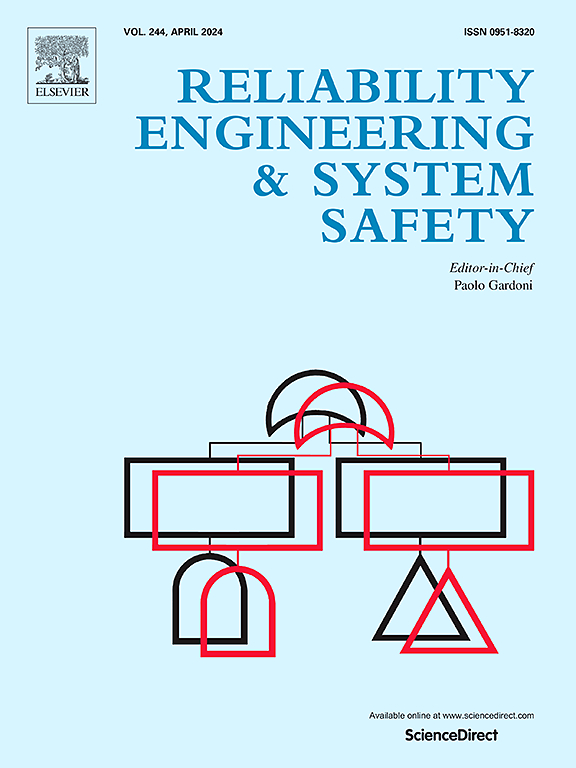Dynamic reliability evaluation considering the stochastic evolving process based on extreme characteristics of system responses
IF 9.4
1区 工程技术
Q1 ENGINEERING, INDUSTRIAL
引用次数: 0
Abstract
The randomness of high-frequency system responses in engineering, such as vibration, stress, and displacement, poses a significant challenge to system reliability and can potentially lead to system failure. This study proposes a novel stochastic evolving process that directly incorporates random extreme values and their occurrence times, enabling the characterization of the spatial distribution and temporal evolution of dynamic system responses. By integrating the saddle-point approximation and renewal process, the proposed approach effectively captures the statistical properties and variation patterns of extreme responses. Additionally, a convolution technique is explored to handle both known and unknown process parameters. A general reliability model is formulated with rigorous theoretical reasoning to assess dynamic system performance. The unified probabilistic framework is developed that systematically integrates dynamic response evolution and different random characteristics for reliability evaluation in stochastic environments. Specifically, an analytical approach is developed for systems with memoryless properties, while a general numerical method, based on the Laplace transform, is introduced to evaluate equipment reliability under stochastic conditions in both the complex frequency and time domains. The proposed method is validated through three engineering case studies, analyzing the impact of mean values and standard deviations on system reliability. The results demonstrate strong consistency and accuracy, aligning well with Monte Carlo simulations, thereby confirming the validity and practical applicability of the approach.
求助全文
约1分钟内获得全文
求助全文
来源期刊

Reliability Engineering & System Safety
管理科学-工程:工业
CiteScore
15.20
自引率
39.50%
发文量
621
审稿时长
67 days
期刊介绍:
Elsevier publishes Reliability Engineering & System Safety in association with the European Safety and Reliability Association and the Safety Engineering and Risk Analysis Division. The international journal is devoted to developing and applying methods to enhance the safety and reliability of complex technological systems, like nuclear power plants, chemical plants, hazardous waste facilities, space systems, offshore and maritime systems, transportation systems, constructed infrastructure, and manufacturing plants. The journal normally publishes only articles that involve the analysis of substantive problems related to the reliability of complex systems or present techniques and/or theoretical results that have a discernable relationship to the solution of such problems. An important aim is to balance academic material and practical applications.
 求助内容:
求助内容: 应助结果提醒方式:
应助结果提醒方式:


